R E P O R T A G E
International TV production of the 20th Ski Jumping World Cup 2015 in Willingen
The best live images can be seen in the ski jumping re-live
27 HD cameras and eight Slomos deliver brilliant images even in snowy conditions
The special challenge for the director and all 70 employees was to produce the live TV images of each 10-second ski jump for the international viewers in about one minute with the best scenes from […] perspectives including […] high-speed cameras and eight Slomos in […] image cuts also re-live. Any mistake, as with the sport shown, would be immediately visible on millions of televisions. A look behind the wintry scenes of the HDTV production in Willingen.
The 20th Ski Jumping World Cup at the weekend at the end of January/beginning of February 2015 brought the community of 6,000 inhabitants in Willingen in northern Hesse plenty of fresh snow as well as around 35,000 guests and 1,300 helpers. They watched the sporting event and worked on the world’s largest ski jump. The two days of the ski jumping competition were watched by 7.2 million television viewers on the ARD live broadcasts. The sporting event was produced as an international feed with a total of 27 [?]HD cameras. The intern. TV distribution was handled by Infront Italy and was broadcast live in more than 20 countries.
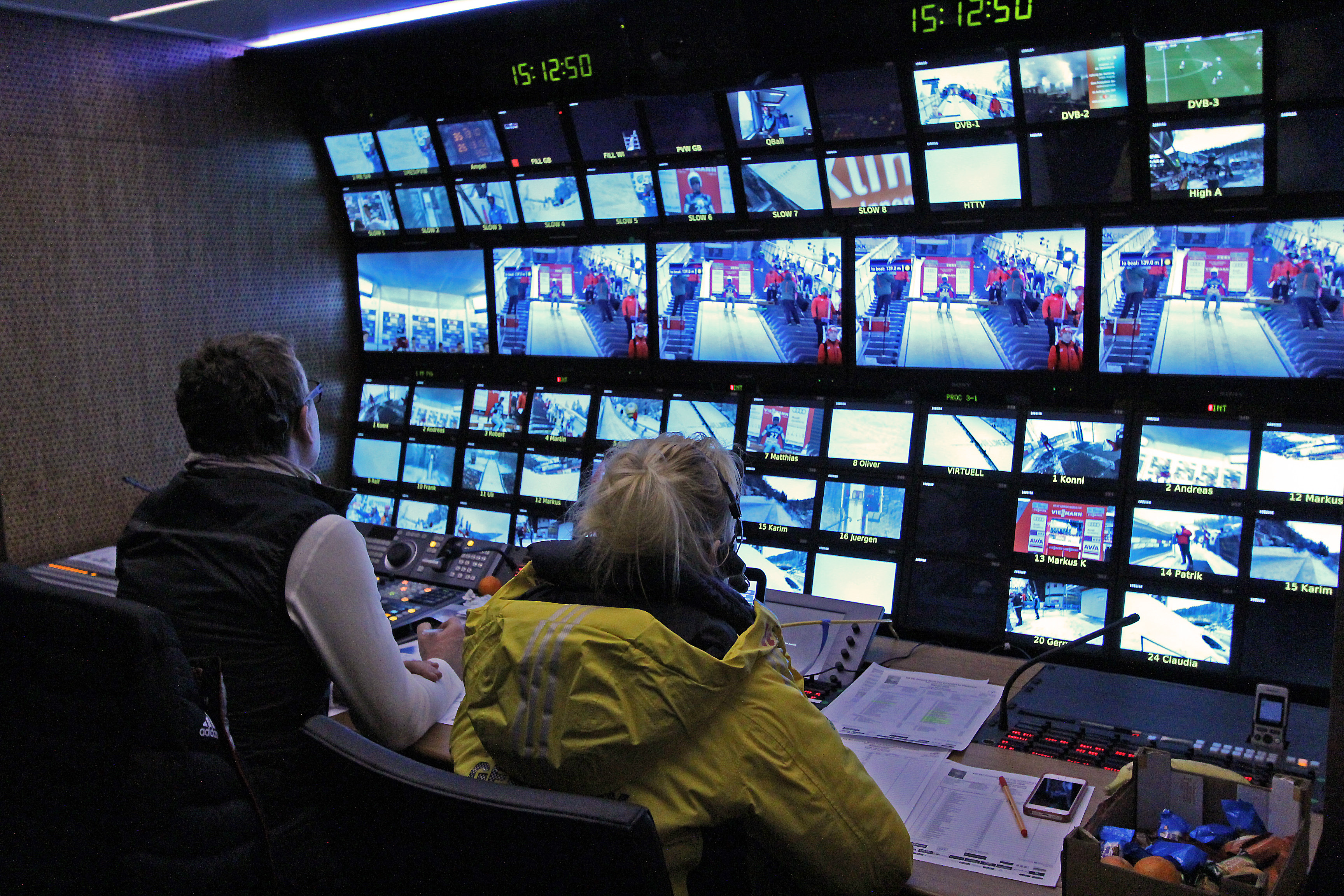 The ski jumping fans reached the stadium below the Mühlenkopfschanze from the parking lots after a walk of around 1,500 meters. Those who then looked up the alpine mountain to the ski jump were amazed at what no television picture can show. How can lightweight athletes slide down the 100 meter long and 35 degree inclined inrun on two “boards” from the height of Cologne Cathedral, jump off the take-off and fly through the air into the depths, only to land safely on both feet after about 150 meters at around 90 kilometers per hour? This was no problem for over 60 of the world’s best ski jumpers on Saturday in the team competition and on Sunday in the individual competition. All athletes landed in the valley without an accident.
The ski jumping fans reached the stadium below the Mühlenkopfschanze from the parking lots after a walk of around 1,500 meters. Those who then looked up the alpine mountain to the ski jump were amazed at what no television picture can show. How can lightweight athletes slide down the 100 meter long and 35 degree inclined inrun on two “boards” from the height of Cologne Cathedral, jump off the take-off and fly through the air into the depths, only to land safely on both feet after about 150 meters at around 90 kilometers per hour? This was no problem for over 60 of the world’s best ski jumpers on Saturday in the team competition and on Sunday in the individual competition. All athletes landed in the valley without an accident.
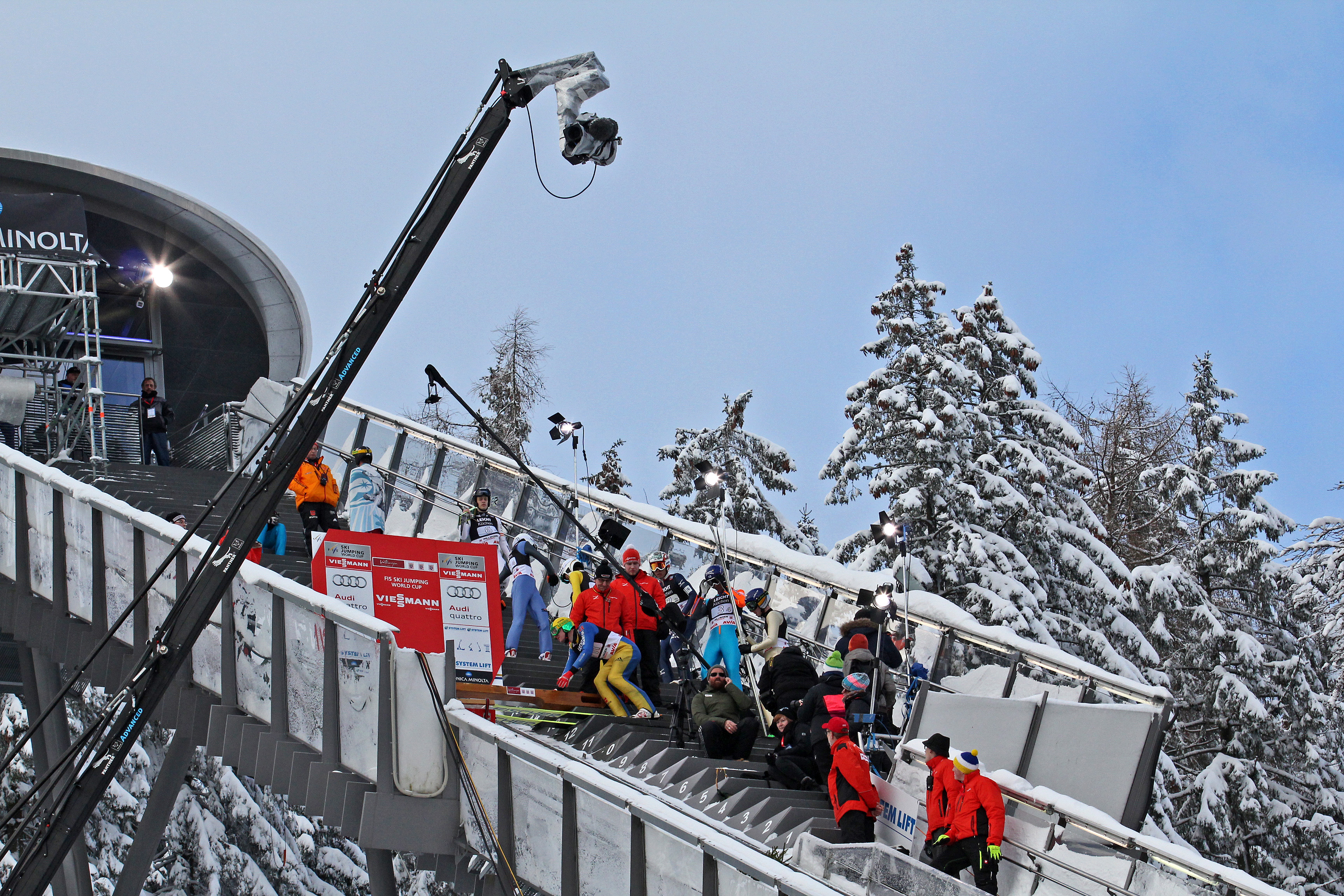
The so-called Adlerhorst, the highest point above the inrun tower of the ski jump, serves as a waiting and warm-up area for the athletes. The cables for three HD cameras were laid up to this point. To get there from the outrun of the ski jump, it was first necessary to take a five-minute ride on the cable car next to the ski jump. After a short walk and transfer to a glass elevator at the inrun tower, the athletes then had to travel up to around the sixth floor. TV employees who had to walk up the mountain also had to get there via countless, oversized and steel steps, a snow-covered and slippery serpentine path next to the ski jump and the aforementioned elevator.
For the viewers on TV and the audience in the stadium, who were also able to follow the action via two video walls, the editorial and production team had to present the athletes‘ ski jump, which only lasted around ten seconds, in the best possible way from 25 different perspectives using the cameras.
The production effort for the international live broadcasts of the Ski Jumping World Cup, including training and qualification, which were broadcast by ARD and Eurosport over three days, was gigantic. The host broadcaster, the German Ski Association (DSV), had commissioned TopVision from Berlin to produce the international TV picture in HD (1080i) and stereo sound. The TV set-up began on the Monday before the start of the event in the TV compound. There were later around 20 different production vehicles, various containers, an ARD presenter position, 10 commentator booths for radio and television and a catering tent. A total of […] meters of cable for the 27 [?]HD cameras and the microphones (antennas for the 5 wireless cameras should not be forgotten either – each antenna needs a cable to the OB van and there must have been at least 8 antennas in use) were laid in wintry weather. Two scaffolds and a 60 [?] meter riser for cameras were set up next to the ski jump and behind the outrun at the stadium. A total of four high-resolution chip cameras were installed in the inrun lane of the ski jump, the traffic lights and clock as well as in the jury tower. Two camera cranes next to the inrun and the landing area as well as a polecam on the ski jump beam provided dynamic images of the ski jumpers from various perspectives. A [?] high-speed hand-held camera showed the athletes in all phases of the jump, including in super slow motion.
The Federal Network Agency was on site with two vehicles and coordinated and monitored all radio frequencies used by five []wireless HD cameras as well as countless microphone handheld transmitters, in-ear receivers, radios, WLAN connections and cell phones in the event area.
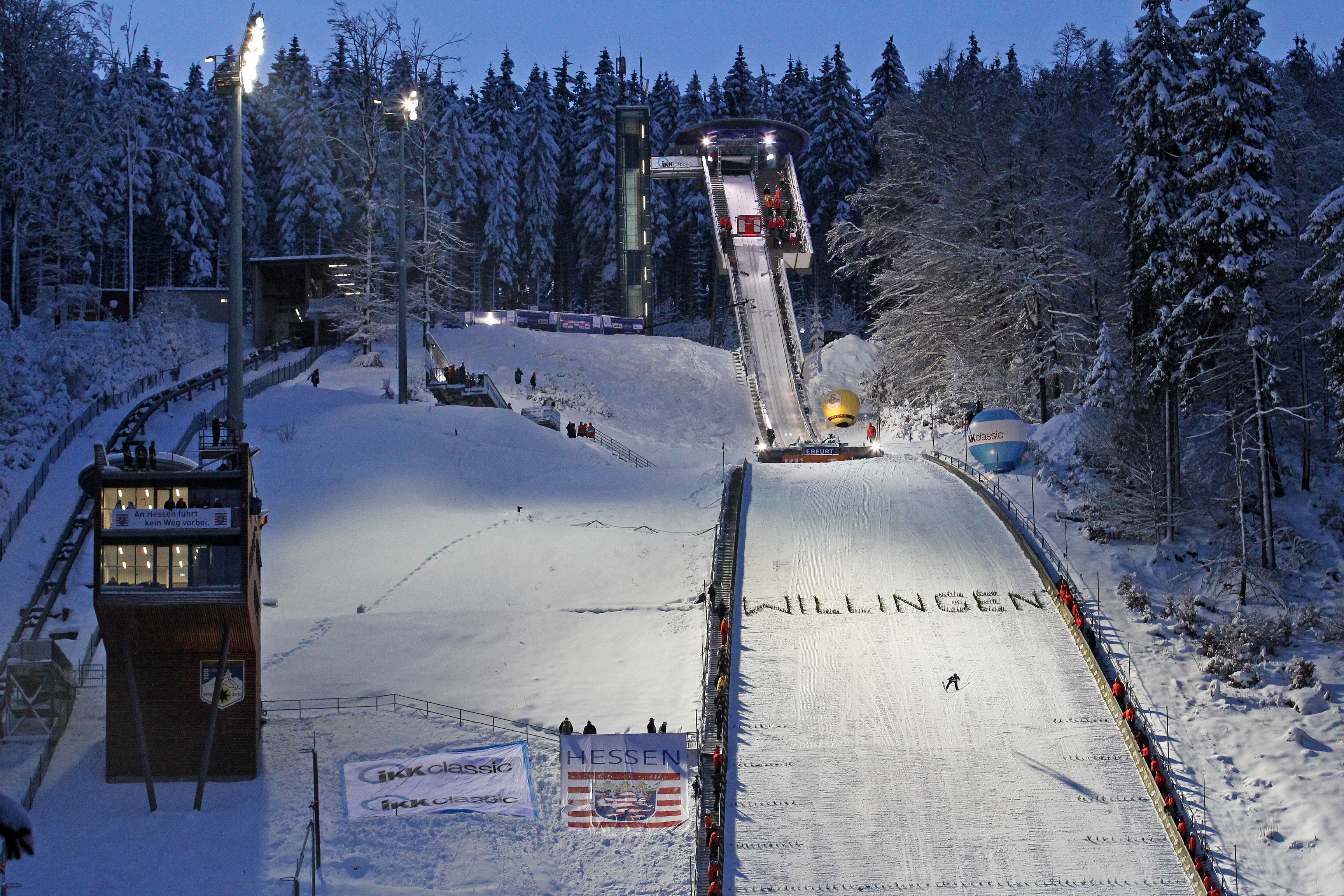
A stadium announcer commented on the action around the Mühlenkopfschanze, which viewers could also see as a program image on two LED video walls.
Parallel to the international image and sound signal, Hessischer Rundfunk produced the national television image for the ARD sports show with seven cameras from an HD OB van from NDR. A total of around 130 employees were involved in the TV and radio production in Willingen.
The challenges for the director, sports editor, production manager, picture mixer, camera operators and slomo operator in terms of content for the production of the world picture consisted of extending the ski jump, which was about ten seconds long in each case, including the simultaneous reactions of the trainers, the emotions of the audience and other participants, with the corresponding graphics, including the individual ski jump phases, to about one minute for the TV viewers, with the most beautiful images captured by the camera operators. In the world picture, the most interesting slomo images recorded in each case were then also re-lived in super slow motion. The DSV engaged Thomas Strobl, a director with particular experience of international sporting events, to stage the television images. In the daily director’s meetings, Strobl explained to each cameraman the scenes, which often only lasted two to three seconds, and the type and setting size in which they should be shot with the HD cameras so that they could be integrated into an exciting and interesting overall sequence of images with approximately […] image cuts per jump, including slomos, until the next ski jumper was sitting on the beam of the ski jump ready to take off.
Because it is impossible to show action taking place at five different locations at the same time in one television picture, many shots were not only shown chronologically live, but re-live, i.e. with the best scenes delayed by a few seconds.
(I would be very careful with this, because it’s like watching football with Jogi Löw’s ball – not that the shot backfires!!!! I would be even more careful!!!)Eight slomo operators were responsible for recording and selecting the best pictures, sitting at the back in the 1st picture control room and in the open 2nd picture control room in the OB van. The 1st slomo operator had the best scenes announced via the other slomo operators in the OB van, who were equipped with headsets. He then suggested the most sensible sequence of slomos to the director and vision mixer.
A sports editor sitting next to the director watched seven monitors in parallel, on which all the athletes she knew by name could be seen in the jumpers‘ camp, the leader box, the eagle’s nest and the outrun. At the same time, she had to monitor the current and sporting results, which were produced as graphics in the neighboring container and fed as a picture signal to the picture mixer in the OB van. As soon as an athlete waved into one of the cameras as a reaction after the ski jump, these images were also included re-live in the program picture.
In the large OB van control room, the images from the cameras, Slomos and all other image sources could be viewed on around 45 [?] HD monitors. Anyone entering the OB van during production heard an almost incomprehensible mix of languages from those present and from loudspeakers with simultaneous short commands and various abbreviations from the picture mixer and 1st Slomo operator, the sports editor, the ARD commentator who spoke almost continuously and finally the director’s brief instructions. And the employees all spoke at different volumes. This is what the original two-minute excerpt sounded like (the numbers indicate the camera and Slomo):
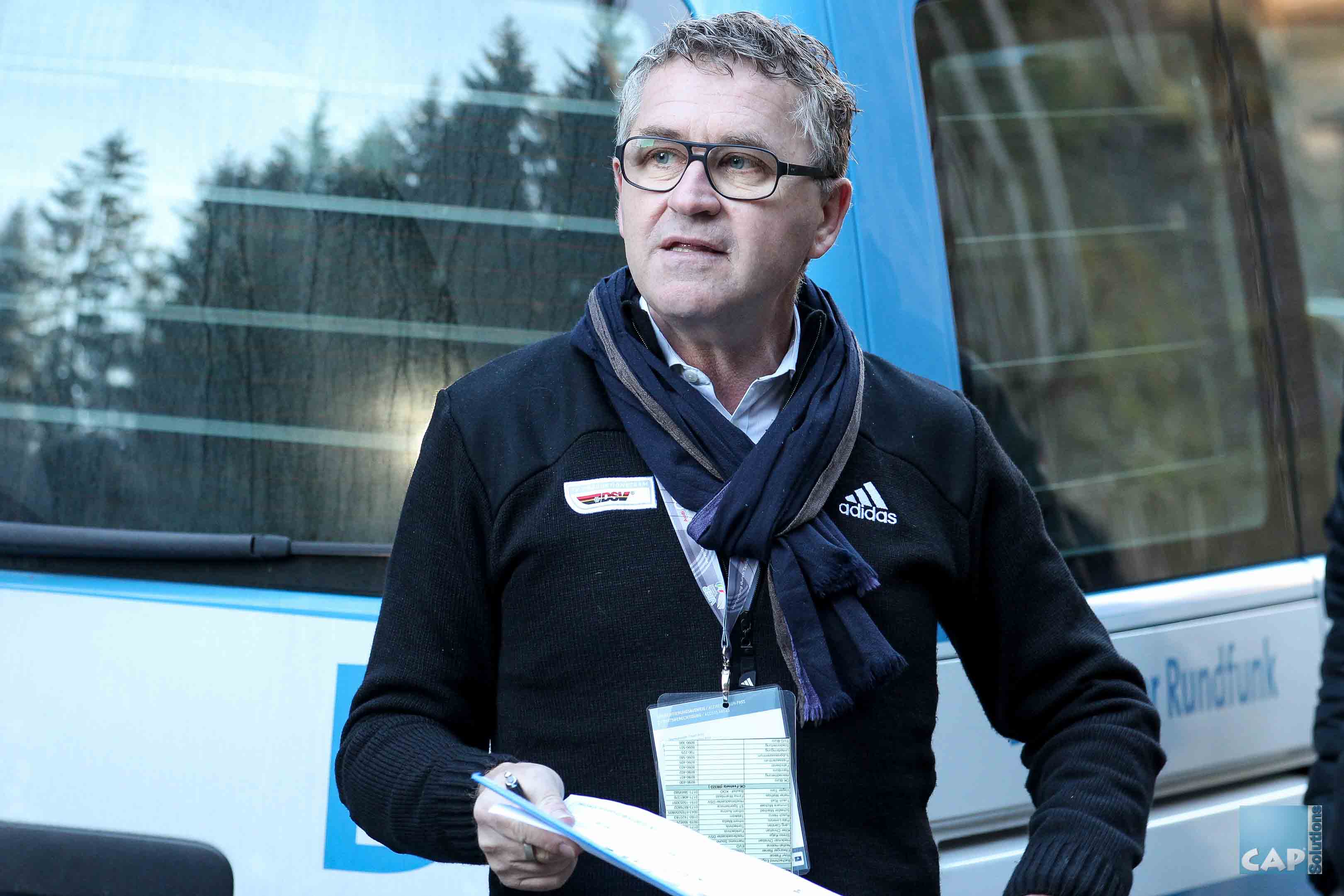
Vierschanzentournee Oberstdorf 2015
Strobl: “But he was really excited in Slow 3.” Editor: “Father on top.” 1st slomo operator: “Slow 7.” Strobl: “With your hands! – Attention Slow 3! – And Slow 3 please – from now on!” Editor: “There’s the mother!” Strobl: “Mom!” ARD commentator: “That’s the mother…” Strobl: “And then on top of the dad!” – Get up on the cube! – And graphics out. – Dad! And back to 13! 13 – that’s fine. – 13 out and the leader – 13!” Picture mixer: “20”. Strobl: “Very cool Karim! – Graphic!” Editor: “Austria in 2nd place.” Strobl: “Show friend (ski jumper) at the top. Is he sitting there somewhere? Where is Freund sitting in the warm-up room?” Editor: “On the right!” Strobl: “Start open at the top with access!” 1st slomo operator to a colleague: “The Highspeed would work. – Then the team reaction is in slow 4.” Editor: “Friend puts on his helmet!” Strobl: “Fits – slow 4.” Picture mixer: “Camera 2 re-live.” 1st slomo operator: “Yes stands!” Picture mixer: “Attention slow 1.” Strobl: “We can take a little more time if we still have it.” Picture mixer: “Thank you! Slow 1 re-live from – 4.” – Strobl: “The leader is still our friend, the petrol station owner [was or is Freund really that? No, that’s Marinus Kraus‘ sponsor, he has a head sponsor with AVIA on it and that’s why I always say “petrol station owner”] – continue with the leader.” Editor: “Let’s hear it!” Strobl: “Let’s hear it from the K13!” 1st slomo operator: “You get the applause, K 13! – Slow 6 please!” Strobl: “The 24 was also great with the thumb!” 1st slomo operator: “And the high-speed camera!” Strobl: “The 24 was great!” (…)
German ski jumper Severin Freund was the eventual winner of the individual jump with 149.5 meters. Strobl read the race correctly and with his team … staged
The image technology is located at the rear of the OB van. Things were rather quiet there for the image engineers. All of the HD cameras on the ski jump showed consistently color-matched and brilliant HD images, even when dusk fell and the darkness and floodlights with additional HMI light followed, even in the driving snow. Achim Jendges, technical director of international TV production, was therefore able to sit in the OB van’s image technology and check his e-mails on his notebook. At the same time, camera images were being recorded there with […][HD-CAM, hard disk?
The sound engineer had set up a stereo […][microphone] setup with […][microphones]. The sound for the program image was mixed at the Stagetec Aurus mixing console in the sound control room behind the OB truck’s driver’s cab. The HD images and sound were transmitted live via HD SNG uplink via satellite to ARD and to more than 20 live countries. …
DSV’s activities as a host broadcaster are developing rapidly and rapidly upwards – comparable to Sportcast in football, DSV is a guarantee for quality productions in winter sports. The creative team, which I have been forming for several years and is made up of the best in Germany, is “winter-proof” and copes well with the tough demands – this is not a matter of course – an organic positive direction. The production team around Rudi Tusch (former ski jumping coach GER) also does an excellent job.
The realization of sports events is becoming more and more complex, the sport and the rules are becoming more and more condensed – the challenge is to “filter out the stories and tell them” – this is a wonderful task for a director, the tools are ready for it.
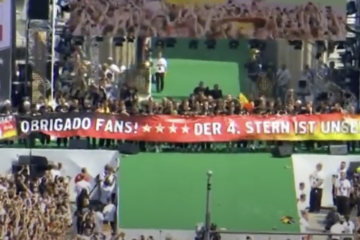


0 Kommentare